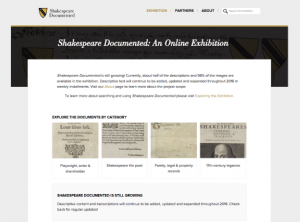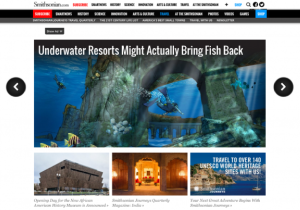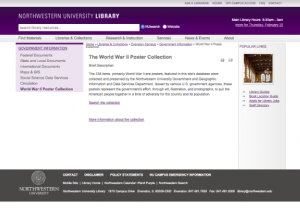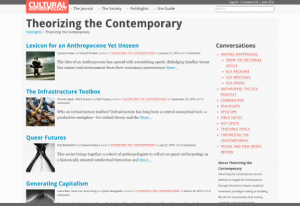Research and Education
Back to Top
|
 |
|
NEA: Black History Month Lessons & Resources
|
Social studies |
|
In honor of Black History Month, the National Education Association (NEA) has assembled a multitude of lessons and resources on the topic of African Americans in the United States. Here educators and other interested parties will find lesson plans, activities, printables, and more - all sorted and organized by grade level: Grades K-5, Grades 6-8, and Grades 9-12. For example, in Musical Harlem, a lesson plan designed for grades K-4, students listen to clips of jazz to identify the styles and musicians associated with the Harlem Renaissance, while in another activity, Notable African Americans from the 18th century to the present, students between fifth and 12th grade play a Jeopardy-style game to test their knowledge of famous African Americans. Readers will also find Background Resources that cover a broad spectrum of subjects, from social studies to sports, excellent Quizzes to help educators assess what their students are learning, and numerous Audio & Video aids to help bring the lessons to life. [CNH] |
|





|
|
 |
|
The Metropolitan Museum of Art: Lesson Plans
|
Arts |
|
These lesson plans from the Metropolitan Museum of Art will take educators and their students into the heart of the collection of this world-renowned cultural institution. Here educators working with students between kindergarten and 12th grade will find lesson plans on such topics as Ancient Mesopotamia, Animal-Inspired Masks and Masquerades, Architecture and the Natural World, and many others. Each lesson plan outlines specified Goals, reference both National Learning Standards and Common Core Standards, offers Questions for Viewing, highlights Objects in the Museum's Collection Related to the Lesson, and much more. For instance, the lesson plan focused on Buddhist and Hindu Art from India seeks to teach students how to identify similarities and differences between Hindu and Buddhist sculpture. The lesson meets a number of National Learning and Common Core standards related to Visual Arts, World History, and English Language Arts, its questions focus on a particular sculpture, and it includes an activity in which students sketch a Buddha figure and a Shiva figure and then compare them. [CNH] |
|





|
|
 |
|
Astronomy & Space: An Overview of NSF Research
|
Science |
|
This overview of the National Science Foundation's Research on astronomy and space is packed with big ideas about the cosmos. Readers may like to begin by exploring The Big Questions on the landing page, such as "Where did it all come from?" or "What is the universe made of, and how does it work?" From there, the Astronomy & Space News section updates readers on the latest in groundbreaking research, such as how stars "adopt" stray cosmic gases, the ins and outs of galaxy clustering, and information about the "most luminous galaxy" in the universe, among many other topics. Educators may also like to navigate to the Classroom Resources, which features an annotated list of Astronomy & Space Classroom Resources, such as links to the Bad Astronomy blog, and many valuable sites with lesson plans, activities, and other learning resources. [CNH] |
|





|
|
 |
|
 |
|
NOAA: Sea Earth Atmosphere: Educational Resources
|
Science |
|
These educational resources from the National Ocean and Atmospheric Administration (NOAA), the National Ocean Service (NOS), and the United States Department of Commerce will be a welcome find for educators teaching earth sciences to elementary school students. Here readers will find visualizations, videos, interactive games, lessons, posters, presentations, and audio archives on a broad range of ocean related topics. Educators may like to scout the site by grade level or by media type. The Lessons section is especially robust, with over 100 professionally structured lessons on such topics such as Aquatic Food Chains, Climate Change, Coral Reef Habitat, Island Formations, Humpback Whales, Ocean Geography and Geology, and many more. Each lesson features a descriptive introduction that outlines the approach and learning goals, clarity about the targeted age group, reference to National Standards and Hawaii State Standards, and in-depth descriptions of learning activities. For teachers introducing students to the life of the ocean, this website will not disappoint. [CNH] |
|





|
|
 |
|
YouTube: Sick Science!
|
Science |
|
Steve Spangler started creating do-it-yourself, at-home science projects for kids in 1991. Since then, he has appeared on Ellen, the History Channel, the Food Channel, the Today Show, Good Morning America, and many other television networks and shows. He also has a YouTube channel where he introduces experiments for free, with well over 200 at the time of this writing. Here readers will find one- or two-minute how-to videos describing how to make a sugar kaleidoscope, perfect fake blood, a musical straw, ink, magnetic slime, vampire slime, an ice tray battery, a coin tower, a homemade lung, a magic color changing flower, and many, many more - all utilizing simple chemistry and ingredients that most kids can find around the house. The videos are also arranged by categories. Under the Playlists tab, readers will find lists such as Science with Sugar (6 videos), Food Science (20 videos), Summer Science Fun! (33 videos), Chemistry (55 videos), and others. [CNH] |
|





|
|
 |
|
Shakespeare Documented
|
Social studies |
|
This collaboration between the Bodleian Libraries at the University of Oxford, the British Library, the Shakespeare Birth Trust, and the National Archives, which was convened by the Folger Shakespeare Library, is perhaps the largest collection of primary-source materials related to William Shakespeare. The exhibit concentrates its considerable erudition on documents contemporary to Shakespeare's life and times. The Documents have been organized into four categories: Playwright, actor & shareholder (205 items); Shakespeare the poet (67 items); Family, legal & property records (186 items); and 17th century legacies (33 items). In addition, within the Exhibition section, readers may filter the documents by useful tags such as Repository, People, Plays & Poetry, Decade, Medium, and Highlights. Readers may also sort the collection by Oldest to Newest or Newest to Oldest. For educators looking for primary resources to enliven their lesson plans - or for anyone with a strong affinity for the the English language's greatest wordsmith - this website is unparalleled in its depth. [CNH] |
|





|
|
 |
|
JNeurosci: The Journal of Neuroscience
|
Science |
|
As the official journal of the Society of Neuroscience, JNeurosci: The Journal of Neuroscience holds a special place of honor in the brain science community. Published weekly, the periodical manages to uphold an impressive standard of quality, exhibiting an impact factor of 6.344 (meaning the average article is cited about 6 times), and an impressively short turnaround between author submission and editorial feedback, making for increased relevance of published research. Recent articles have included examinations of the synaptic alterations, investigations into the minutia of the dorsal hippocampus, and an exposition on Goal-Directed Decision Making with Spiking Neurons. Readers who are not members of the Society, or part of a large library system with access to academic journals, will want to scout for the tags (red in the current issue, yellow in archived ones) that indicate which items are Free Access Articles. While the number of these featured articles changes each week, readers can rely on a hearty archive of freely available reading on groundbreaking neuroscience topics. [CNH] |
|





|
|
























